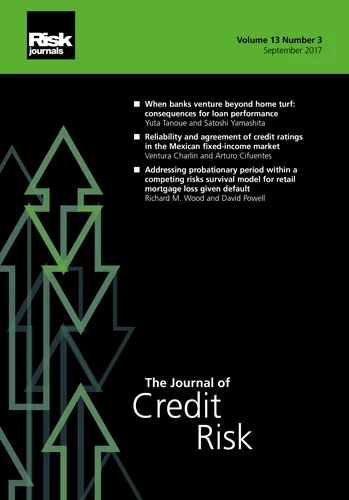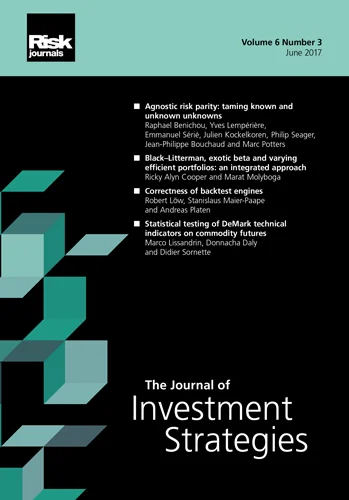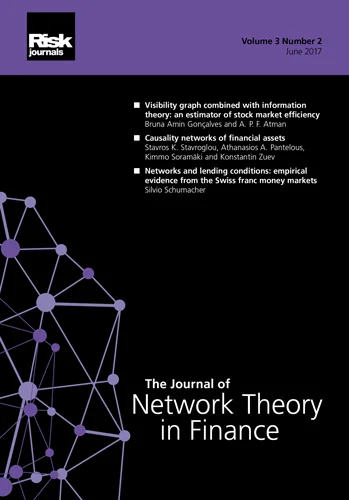Journal of Energy Markets
ISSN:
1756-3615 (online)
Editor-in-chief: Kostas Andriosopoulos
Volume 7, Number 3 (September 2014)
Editor's Letter
This issue of The Journal of Energy Markets features a broad range of application areas within energy markets.
Our first paper is on the topical theme of renewable energy, with a particular focus on onshore wind investment. Generating power on a large scale using wind is still a relatively new technology, but already it is becoming potentially attractive to consider repowering existing wind farms with upgraded turbines rather than developing new greenfield projects. Existing sites are usually favorably located, with good connections and fewer planning issues. In this context, Sebastian Himpler and Reinhard Madlener, in their paper "Optimal timing of wind farm repowering: a two-factor real options analysis", develop a model of optimal timing based on investment costs and revenues being specified as continuous-time stochastic processes. The model is applied to the case of repowering a 4 X 450 kW wind farm in Denmark to one with 3 X 2 MW. But the authors observe that high uncertainty in Denmark in terms of revenues may hinder the further development of repowering and lowers the probability of success significantly, while the selling price of the used turbines has only a minor effect on the optimal timing of repowering.
In the issue's second paper the dynamics of gas prices are considered. In the paper "Modeling natgas intramonth spot (daily or "cash") price movements" by Ehud I. Ronn, a mean-reverting model for the relationship between spot (day-ahead, or "cash") prices and the prompt-month futures contract in the natural-gas market is presented. The paper documents the seasonally dependent comovement between spot and futures prices, presents both ex ante and ex post measures of the pricing bias, and derives theoretical and empirical results for the valuation of intramonth natural gas derivative structures.
In the third paper in the issue, "Volatility transmission in energy futures markets" by Michael Soucek and Neda Todorova, the focus is broadened from natural gas to include crude oil and gasoil. The authors present a novel application of a multivariate heterogeneous autoregressive model for studying volatility transmission patterns in these energy futures markets. In particular, the nature of volatility spillovers between the different markets is examined using range-based volatility proxies and splitting volatility in components defined over different time horizons. The results provide evidence that crude oil futures carry significant information about the volatility evolution of other energy futures traded on the Intercontinental Exchange and reveal interesting insights into the sources of volatility interrelations. Short-term shocks in Brent oil volatility significantly affect the volatility of gasoil futures, while the impact of oil and gasoil on natural gas is driven by the long-term volatility component. Additionally, Brent oil and gasoil Intercontinental Exchange futures volatilities exhibit strong positive dynamic correlation, whereas the remaining pairwise correlation curves fluctuate around zero.
In our final paper, "A structural linkage model for freight rates", Takashi Kanamura provides a paper on a different application area relevant to energy markets. The paper examines the role of Capesize vessels in freight markets by proposing a continuous-time freight rate model based on functional supply and demand curves. The model incorporates market participant trading behavior in the sense that high Capesize prices induce shipowners and charterers to switch from Capesize to Panamax vessels, resulting in a rise in Panamax demand and a high Capesize-Panamax price correlation, while high Panamax prices tend to cause freight market participants to switch from Panamax to much smaller ships, resulting in a fall in Panamax demand and a low Capesize-Panamax price correlation. The model also represents both the positive and negative relationships between the freight prices and the volatilities of the freight prices; these effects are referred to as the "inverse leverage effect" and the "leverage effect", respectively. This empirical study estimates the model parameters using the Capesize and Panamax rates for fronthaul routes given by the Baltic Exchange in recent upward-trend periods. The author demonstrates that Panamax demand increases with Capesize prices and decreases with Panamax prices, resulting in high and low Capesize-Panamax price correlations, respectively.
Each of the four papers in this issue provides a distinct research contribution with an obvious practical implication. Taken together they admirably exhibit the intention of The Journal of Energy Markets to provide leading-edge insights into energy markets, broadly interpreted.
Derek W. Bunn
London Business School








